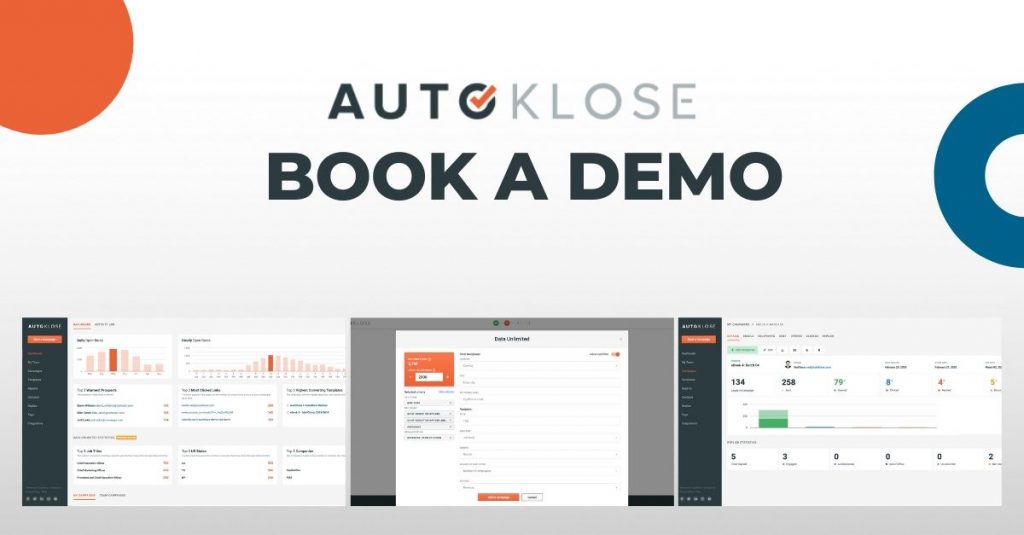
Writing and sending emails are part and parcel of anyone’s professional life. Marketers send emails to consumers to promote their products. Businesses that are looking to increase brand awareness and improve SEO conduct email outreach for guest posting opportunities. And when people are looking to network, they need to send emails as well.
In other words, we all need to master the art and science of writing great emails if we want to succeed in business. In this article, we’ll look at introduction emails and how you can avoid making some common mistakes in yours.
Let’s dive in!
Why Is Your Introduction Email Important?
You need to know how to write and send introduction emails for one reason: they’re the best way to start building a relationship with someone you’ve never met. When you meet someone for the first time, you need to put your best foot forward to create a good impression. If you manage to do that, you can develop that all-important relationship.
It’s the same with emails. If you manage to capture their attention and engage your recipient’s interest with your introduction email, you significantly increase your chances of getting a response. And if all goes well, you and that previously unknown person will develop a more meaningful relationship that will be beneficial to you both.
6 Mistakes to Avoid in Your Introduction Emails
So how exactly should you go about writing your introduction emails? In this section, we’ll look at the six mistakes you should avoid. These mistakes are extremely common, so don’t panic if you’ve committed one or more in the past. You can always improve going forward.
1. Not Having a Clear CTA
Let’s imagine you’ve managed to write a good introduction email. Your recipients are interested, but they don’t know what you want them to do. What do you think will happen? They will probably close your email and forget about it. In other words, you’ll have lost the prospective customer, lead, or networking connection.
That’s what happens when your introduction email doesn’t have a clear and effective call to action. The CTA is your final instruction to your recipients. If the CTA isn’t obvious in your email, the recipient won’t be able to take your desired action.
Use simple language for your CTA. Be clear, be straightforward, and make it as visible as possible. When applicable, repeat the CTA throughout the email. Remember, you want your recipient to understand exactly what you want them to do.
Check out this example from Forever21, a fashion retailer:
The CTA is short and to the point: the company wants you to visit its website and shop its collection.
You should A/B test your CTAs so you know which versions get the best response. To do this, use email marketing tools to set up two emails that are the same except for the CTA. Send the two emails to a sample of your audience and see which one delivers. You can follow this same process for other variables, too.
2. Using Sales-Heavy Language
Your first email should capture the attention of your recipients. You can’t do that if you use sales-heavy language. Most of the emails your recipients receive probably focus on selling products or services, but no-one likes to read introduction emails that are too pushy. They are either left unopened or quickly deleted.
So, make an effort to stand out in your recipients’ inboxes. Instead of being a salesperson, be a friend. Personalize your email – not just the email body but also the subject line. Personalization works wonders! According to Oberlo, personalized subject lines result in an astounding 50% higher open rate!
Remember that the focus should not be on you, your company, or your product. The focus should be on the recipient. People are not likely to respond if you make it look like your only goal is to sell. If you don’t show that they will benefit from taking your desired action, forget about them responding to your introduction emails.
3. Sending Emails Late at Night
Contrary to popular belief, when you send an email matters. Sending emails when your recipient is likely to be sleeping is a bad idea for several reasons. First of all, the alert might wake them up, if they’ve forgotten to turn their device onto silent mode – and you won’t be their favorite person if your email ruins their rest!
In addition, even if it doesn’t wake them up, an email sent in the dead hours of the night from someone they never talked to is unlikely to make a good impression. It increases the likelihood they will delete it and forget about you.
Finally, inboxes tend to be full first thing in the morning. Sending your email during the night means you risk it ending up buried amidst countless others.
According to Optinmonster, the best time to send emails is between 10 a.m. to 2 p.m. To make sure you don’t forget to send your introduction emails during that time, set reminders. You can download Chrome extensions for salespeople to help you send your emails out at the perfect time.

4. Not Using Professional Language
You need to treat your recipients as your friends to get them to take the action you want. That doesn’t mean, however, that you can use unprofessional language. If you do, you’ll only turn off your recipients, who will ignore your email or delete it. Be respectful and use professional language at all times.
Using professional language also means making sure your introduction emails are free of grammatical errors and spelling mistakes. If your recipient opens your email and sees countless mistakes, they won’t take you seriously and they will be unlikely to open an email from you again.
Run your introduction emails through a grammar checker, and proofread them several times before you send them. You want an impeccably written email to wow your recipients. Because when you give them a great first impression, you increase the chances that they will respond.
5. Forgetting Mobile Readers
Most people check their inboxes via their mobile phones nowadays. According to Email Monday, 81% check their emails using their smartphones. That’s more than the 74% who check their inboxes from a desktop.
Source: Email Monday
In short, you need to make sure your introduction emails are mobile-friendly. Here are some tips that will help you achieve just that:
1. Your subject line should be no more than 25 to 30 characters.
2. Use the pre-header text. This is the first line of your email body that appears below the subject line. It serves as a support to the subject line.
3. Keep copy short and concise. Use short sentences, subheaders, and bullet points. In other words, make the content easily scannable.
4. Keep CTAs front and center, make sure your final instruction is visible. CTA buttons should at least be 44×44 pixels, clickable, and surrounded by plenty of white space.
Test your introduction emails across multiple devices before sending them. This way, you’ll be able to see how they’ll look on each device and make adjustments if needed.
6. Using Too Many Images
Images look great in emails. They help engage the interest of recipients who open the emails. But too many pictures? That’s another story.
Including too many images in your introduction emails will turn off recipients because they’re an eyesore. You also increase the odds that they won’t load properly. Pictures can slow down the email loading speed, and many readers simply won’t bother to wait for them all to load. They’ll just delete the email and move on.
You’ll need to find the right balance between text and images to get your message across. You can use email customizer plugins to customize your design before you send the email. Additionally, if you want to enhance the visual impact of your email, you can learn how to change image backgrounds to make your email attractive and visually appealing, but be careful not to bombard the reader with too much content or take forever to load.

Bottom line
To succeed in the business world, you need to know how to write and send the kinds of emails that elicit responses. Whatever your goals, introduction emails are vital because they are the first time your prospective customer or contact hears from you. First impressions are everything. The way you go about writing your introduction emails will determine whether or not your recipients will respond to you or take any other desired action.
In this article, we’ve discussed six common mistakes you should avoid. Stay alert so that you don’t unknowingly commit these mistakes and squander your chances. And when you write, make sure you think of your reader first. Put them front and center at all times. Do all those things, and you’ll see your introduction email open rates improve and your conversions increase.
Bio
Owen Baker is a content marketer for Voila Norbert, an online email verification tool. He has spent most of the last decade working online for a range of marketing companies. When he’s not busy writing, you can find him in the kitchen mastering new dishes.
 The Autoklose
The Autoklose 


Leave a Reply
You must be logged in to post a comment.